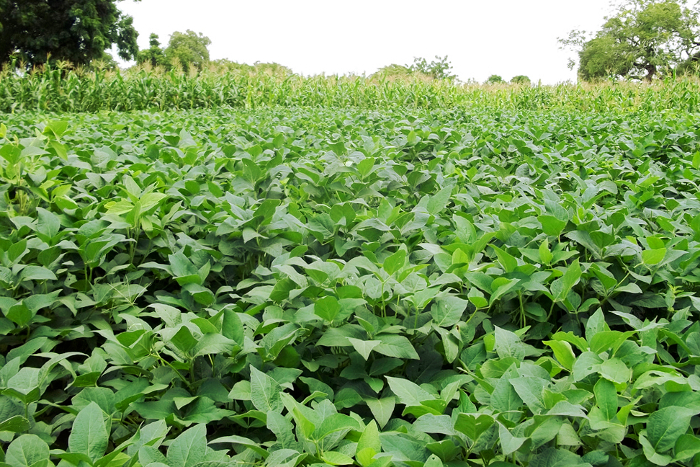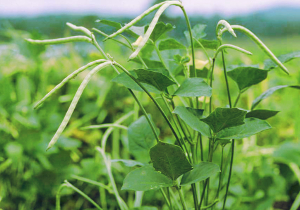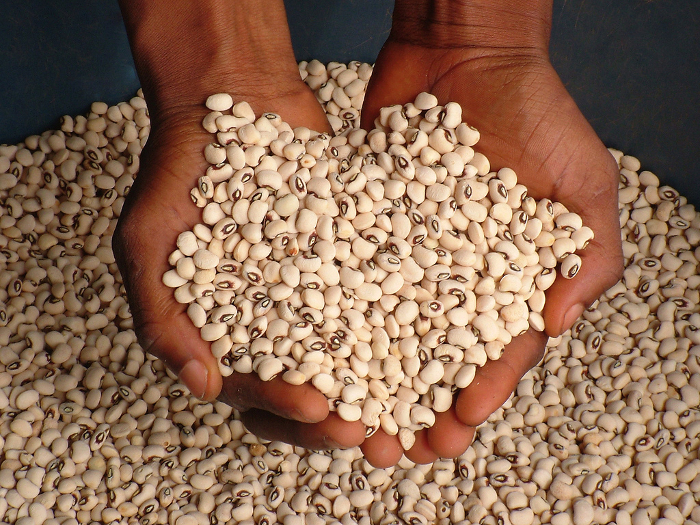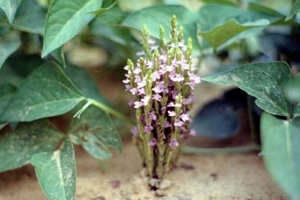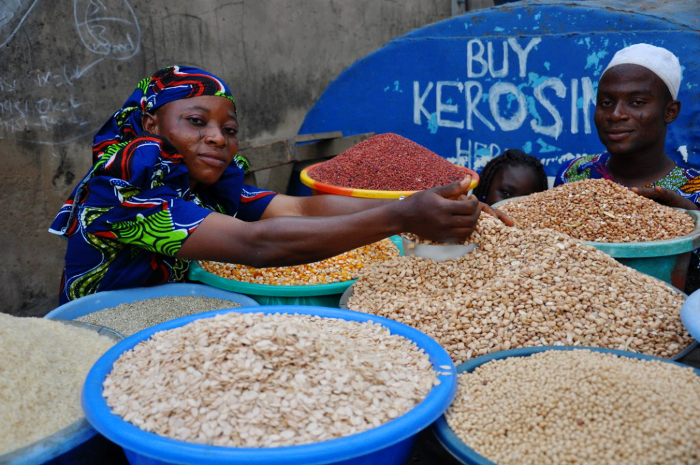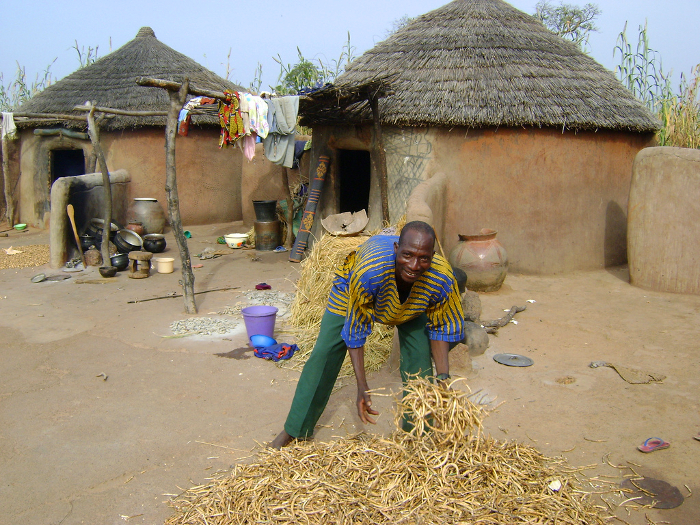“There is a clear need to develop a range of varieties that meet diverse requirements”
For 30 years, Ousmane Boukar has been working towards a singular goal: to improve and secure cowpea production in sub-Saharan Africa.
“Cowpeas are very important in sub-Saharan Africa,” he says. “They are an important source of protein, and contribute to the livelihood and food security of millions.”
Despite their dietary importance, cowpea yields in Africa are low – on average a mere 10 to 30 percent of their potential. This is primarily because of attacks from insects and diseases, but is often further compounded by chronic drought.
Since 2007, Ousmane has worked for the International Institute of Tropical Agriculture (IITA) as cowpea breeder and Station Representative in Kano, Nigeria. As a breeder, his mission is to improve yields by identifying additional genetic sources of resistance to pests and diseases, tolerance of parasitic weeds, improved drought tolerance and adaptation to low soil fertility.
To accomplish this, he searches for genes associated with these kinds of valuable traits. He then uses this information to develop breeding populations comprising of plant lines with multiple useful traits, and works with farmers to grow these populations to make sure they do grow well in the field before releasing them as new varieties.
“Cowpea breeding is very challenging because of the range of production environments and cropping systems, and the diverse preferences among consumers and producers for grain, leaves, pods and fodder,” Ousmane says. “There is a clear need to develop a range of varieties that meet those diverse requirements, combining high yield potential and resistance to the major production constraints.”
Joining an international programme
The same year Ousmane joined IITA, he joined forces in a new collaboration with cowpea breeders and geneticists from Burkina Faso, Mozambique, Senegal and the USA. He was Product Delivery Coordinator for the cowpea component of the Tropical Legumes I project (TLI) – a seven-year project funded by the CGIAR Generation Challenge Programme (GCP) that sought to use marker-assisted breeding techniques to breed high yielding, drought-tolerant and insect- and disease-resistant varieties of four important legumes.
“TLI has had a huge impact in Africa in terms of developing capacity to carry out marker-assisted breeding. This form of breeding helps us to breed new varieties in three to five years instead of seven to ten years.”
Key outcomes from the cowpea component of the project were a cowpea genome map and molecular markers that have helped breeders like Ousmane locate the genes in cowpeas that determine and regulate desirable traits. These markers can be used like flags to indicate which potential parent plants have useful genes, and which of the progeny from each cross have inherited them, making breeding more efficient.
“We have used this technology to develop advanced breeding lines that are producing higher yields in drier conditions and displaying resistance to several pests and diseases such as thrips [insects which feed on cowpeas] and Striga [a parasitic weed]. We expect these lines to be available to plant breeders by the end of 2015.”
Ousmane says the success of the cowpea component of TLI owes much to the pre-existing relationships the partners had before the project. “TLI was an extension of a USAID collaborative project [Bean/Cowpea Collaborative Research Support Program] we had been working on since 2002,” he explains. “I had also crossed paths with breeders in Senegal, Burkina Faso and USA many times when I worked with the Institute of Agricultural Research for Development [IRAD] in Cameroon.”
Ousmane was with IRAD in his home country of Cameroon from 1990 to 2007. He also worked by correspondence during this time to complete both his Master’s and Doctoral degrees in Plant Breeding and Genomics from the University of Purdue in Indiana, USA. His thesis involved characterising and mapping Striga resistance in cowpeas. Striga is a parasitic weed widespread in West Africa, which can reduce susceptible cultivar yields by up to 100 percent. Resistance within the host plant is the only practical control method (see ‘Cowpea in between’, GCP Partner and Product Highlights 2006, page 23).
Taking the lead in the Community of Practice
In 2011, in addition to his TLI and Product Delivery Coordinator roles, Ousmane became the coordinator of the Cowpea Community of Practice (CoP) – a newly created network founded by GCP to develop capacity in Africa and help GCP researchers share their new expertise in molecular breeding.
“The CoP was designed for cowpea researchers and people interested in cowpeas to ask questions and to share their expertise and knowledge, particularly with people who don’t have the experience, such as graduate students or breeders new to cowpeas,” Ousmane explains. Members are from Burkina Faso, Cameroon, Kenya, Malawi, Mali, Mozambique, Niger, Nigeria, Senegal, Tanzania and USA.
“My role as coordinator is to collect ideas, find funding opportunities, and understand member expertise and resources so I can direct members of the community to the right people.”
Ousmane says the position has opened his eyes to all the new research going on in cowpea. The number of new researchers in the field also heartens him. “There are more researchers that are practising molecular breeding than ever before, which is great, because we can enhance their impact and efficiency in cowpea breeding.”
As membership grows, Ousmane is confident that the community and capacity that have developed with help from GCP will remain sustainable after GCP’s close at the end of 2014. “Governments in Nigeria and Burkina Faso understand the importance of cowpeas and are investing in our research. As the set of skills and the number of personnel grow in other sub-Saharan countries, we are confident that cowpea research will expand and produce higher yielding varieties for their farmers.”
More links
- Here on the Sunset blog: Cowpea research helps secure food supply during the ‘hungry months’ in Africa
- Cowpea blogposts on the GCP Blog
- Cowpea research | research products
- Cowpea Community of Practice (on IBP website)
- Legumes Research Initiative | InfoCentre
- View Ousmane’s 2013 presentation from the GCP General Research Meeting: ‘Cowpea product catalogue and project status – Projects ongoing, completed, and to be continued post-2014’ (on SlideShare):








